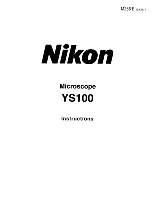
Multifluorescence –
The Crosstalk Problem and Its Solution
If a specimen is labeled with more than one fluo-
rochrome, each image channel should only show
the emission signal of one of them.
If, in a specimen labeled red and green, part of the
green light is detected in the red channel, the phe-
nomenon is known as crosstalk or bleed-through.
This may lead to misleading results, especially in
colocalization experiments.
One can distinguish between two kinds of cross-
talk: emission and excitation crosstalk.
In a pure emission crosstalk between two fluo-
rochromes A and B, the two emission spectra will
overlap, but the laser lines will excite the dyes
independently of each other; i.e. there is no over-
lap of the excitations.
Excitation crosstalk would occur if the laser that
excites fluorochrome A also partially excited fluo-
rochrome B.
The problem of emission crosstalk can be solved
by sequential excitation and detection (Multi-
tracking) of the fluorochromes. In case of a com-
bination of excitation and emission crosstalk,
additional spectral information is needed for sep-
arating the emission signals.
12
Emission crosstalk
Section through a mouse kidney, double-
labeled with Alexa 488 (wheat germ
agglutinin) and Alexa 568 (phalloidin).
Simultaneous excitation with 488 and
543 nm. The emission of Alexa 488 is
detected in both the green (BP 505-530 nm)
and red (BP 560-615 nm) channels.
Because of this bleed-through, the areas
labeled with Alexa 488 appear yellow in
the superposition and could be misinter-
preted as colocalization with the Alexa 568.
Elimination of emission crosstalk
by Multitracking
If Alexa 488 and 568 are excited and
detected sequentially, no green signal is
detected in the red channel.
Structures labeled with Alexa 488 appear
green in channel superposition.












































